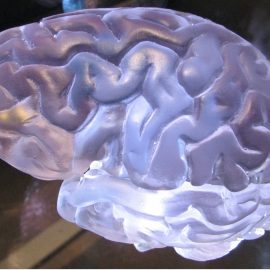

This article is an excerpt from the Shortform book guide to "Leaders Eat Last" by Simon Sinek. Shortform has the world's best summaries and analyses of books you should be reading.
Like this article? Sign up for a free trial here .
What are the signs of toxic workplace culture? How does toxic work culture affect your employee’s performance and willingness to collaborate?
Toxic workplace culture is a breeding ground for the stress hormone cortisol. Cortisol stifles the release of oxytocin, the neurochemical which fosters empathy and trust. When employees lack empathy and trust toward one another, they’re much less likely to collaborate, seeing each other as competitors and threats to their own success.
Here’s how a lack of empathy creates a toxic workplace culture.
The Dangers of Not Prioritizing Your Subordinates’ Needs
Paying attention to and fulfilling your subordinates’ needs creates supportive environments and encourages collaboration and innovation. On the other hand, if you don’t prioritize your subordinates’ needs, Sinek implies that you become a threat to them: You lose your empathy for your subordinates and start seeing them as assets to maximize profits, rather than people. As such, you stop being attentive to or fulfilling their needs, instead only supporting people who maximize profits.
(Shortform note: In The Dichotomy of Leadership, Jocko Willink and Leif Babin agree with Sinek that supporting your subordinates is a vital part of leadership. They argue that leaders should coach any struggling subordinates, providing greater support and attention until the subordinate meets the team’s standards. However, they caution leaders to remember their responsibility to the group as a whole, as well as to individual subordinates. If a subordinate doesn’t improve or meet the team’s standards, they can hurt the entire company. At that point, Willink and Babin say you’re obligated to fire them so you can continue to support the entire group.)
In this kind of toxic workplace culture, your subordinates don’t feel safe. They focus on protecting themselves and their careers rather than collaborating or finding innovative ways to help the company as a whole. This leaves the company divided and stagnant, unable to effectively counter external threats.
For example, let’s say Robert has a manager that prioritizes profits over supporting his employees. He only pays attention to or fulfills his subordinates’ needs when they maximize profits. Robert has the innovative idea to start marketing the company’s products to a wider range of people. This could bring in a lot of profits, but it would require the marketing team to spend time and money organizing the new strategy, and there’s no guarantee that it would be profitable. Robert worries that he’ll lose his manager’s support if his idea isn’t immediately profitable. Thus, he focuses on maintaining his position and maximizing profits, maintaining the status quo instead of suggesting his innovative idea, which causes the company to stagnate.
(Shortform note: Sinek warns that making your subordinates feel unsafe results in a breakdown of collaboration and innovation. In addition to Sinek’s recommendations for how to prevent your subordinates from feeling unsafe at work, one method might be building social relationships into your subordinates’ work lives. This could manifest as hosting group activities like company picnics, cycling your subordinates through different groups to encourage new relationships, or nurturing existing relationships by assigning friends to the same team.)
Cortisol Hinders Collaboration and Innovation
According to Sinek, a neurochemical called cortisol is the reason people stop collaborating and innovating when they feel unsafe. Also known as the stress hormone, cortisol sends your body into survival mode when you’re threatened. It shuts down any non-essential bodily functions so your brain can identify the threat as quickly as possible.
One of the functions cortisol impedes is oxytocin production. This means when employees feel stressed or unsafe at work, they lack the oxytocin that would otherwise encourage them to feel empathy and form trusting relationships, which are the keys to effective collaboration.
Cortisol also prevents your employees from innovating: It impedes their ability to focus on things other than identifying whatever made them feel unsafe. When humans identify a physical threat, our bodies release adrenaline, which Sinek implies flushes the cortisol from our systems and alleviates our feelings of insecurity. Unfortunately, most of modern humanity’s threats are abstract, like having too much responsibility at work. When your employees can’t identify a physical danger, their bodies don’t release adrenaline and the cortisol stays in their systems longer, distracting them from creating innovative solutions to problems.

———End of Preview———
Like what you just read? Read the rest of the world's best book summary and analysis of Simon Sinek's "Leaders Eat Last" at Shortform .
Here's what you'll find in our full Leaders Eat Last summary :
- Why a leader must prioritize her subordinates’ needs above her own
- How empathy and support can be strong managerial tools
- Why you must see your customers, suppliers, and employees as people






